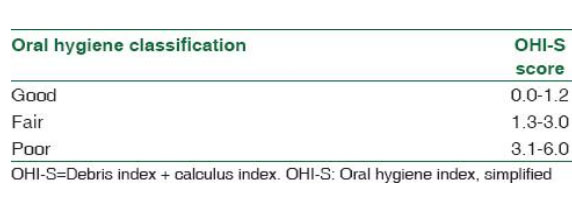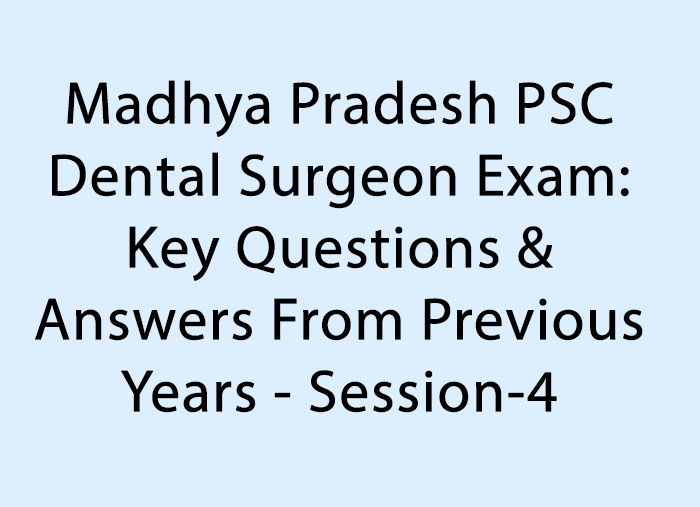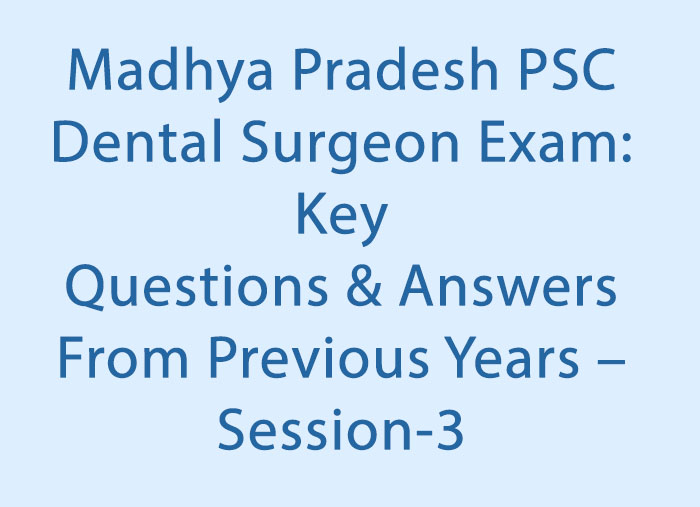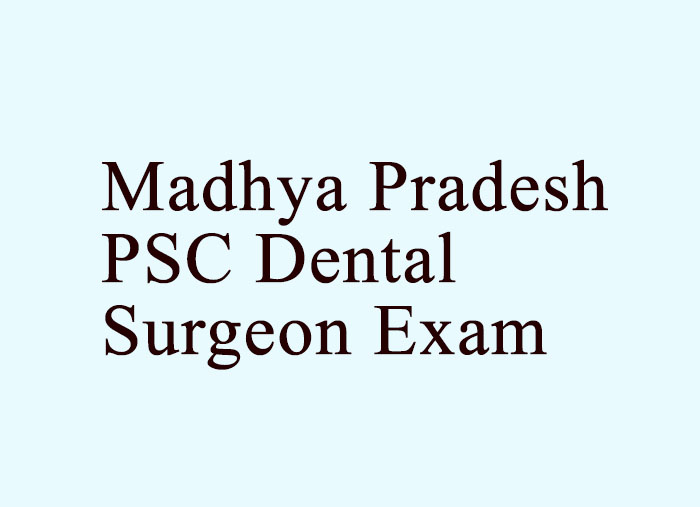- NEED HELP? CALL US NOW
- +919995411505
- [email protected]
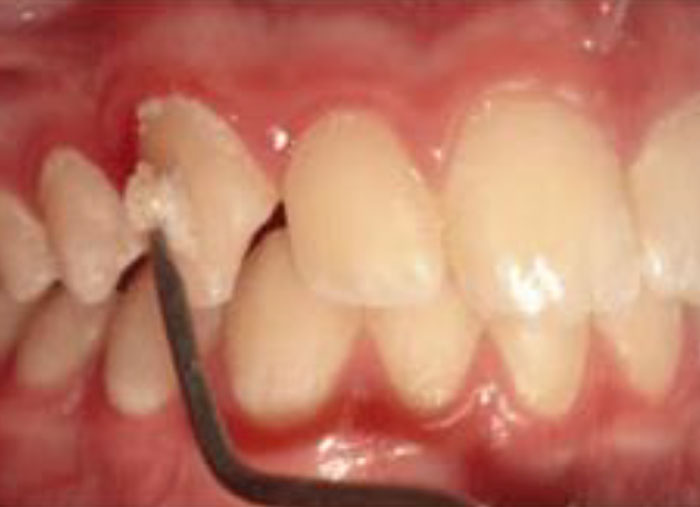
1. During bleaching, light emitted from LED lamp is:
- Cold blue visible light 465 nm
- Hot blue visible light 465 nm
- Cold orange visible light 465 nm
- Cold green visible light 465 nm
ANSWER. 1 (Cold blue visible light 465 nm)
- During bleaching, the light emitted from an LED lamp is typically a cold blue visible light with a wavelength of 465 nm.
- The blue light activates the bleaching agent, typically hydrogen peroxide or carbamide peroxide, which then releases oxygen ions that penetrate the enamel and dentin to break down the chromophores and lighten the tooth.
- The cold blue light emitted by the LED lamp does not produce significant heat, which helps to minimize discomfort or sensitivity during the bleaching process.
- The specific wavelength of the blue light emitted by the LED lamp can vary depending on the manufacturer or the specific device, but 465 nm is a common wavelength used in dental bleaching systems.
2. The process of making the impression material to conduct electricity is:
- Metallizing
- Electroplating
- Iontophoresis
- Galvanizing
ANSWER. 1 (Metallizing)
The process of making an impression material conductive for use in electroplating or other electroforming processes is called "metallizing." Metallizing is the process of coating a non-conductive material, such as an impression or a model, with a thin layer of conductive material, such as metal, to make it electrically conductive.
This is typically done by applying a conductive coating, such as a metal or graphite, to the surface of the material using a spray gun or other application method. The conductive coating forms a thin layer over the surface of the material, allowing electrical current to flow through it. Once the material has been metallized, it can be used in electroplating or other electroforming processes, where a layer of metal is deposited onto the surface of the material by passing an electrical current through it.
3. As the intensity increases, hue perception changes. The effect is called:
- Metamerism
- Bezold- Brucke effect
- Chameleon effect
- Tyndall effect
ANSWER. 2 (Bezold- Brucke effect)
- The Bezold–Brücke shift or luminance-on-hue effect is a change in hue perception as light intensity changes. As intensity increases, spectral colors shift more towards blue (if below 500 nm) or yellow (if above 500 nm). At lower intensities, the red/green axis dominates.
- This means that reds become more yellow with increasing brightness. Light may change in the perceived hue as its brightness changes, despite the fact that it retains a constant spectral composition.
- It was discovered by Wilhelm von Bezold
- The shift in the hue of the colors that occur as the intensity of the corresponding energy change is materially increased, except in some cases like the change for certain invariable hues (approximating the psychologically primary hues).
- Both Bezold & Brücke worked on the Bezold-Brücke effect and gave important contributions in the field of optical illusions
- At low light levels, the rods in the retina are more dominant than cones and color perception is lost.
- As brightness becomes more intense,color appears to change (BezoldBrucke effect).
4.Cheese like material composed of food particles, desquamated epithelial cells,leukocytes and microbes, which can be easily displaced with water spray is known as:
- Materia alba
- Pellicle
- Calculus
- Acquired plaque
ANSWER. 1 (Materia alba)
- Materia alba is a soft non-mineralized deposit on the surface of teeth that is white in colour. It is soft and visible to the naked eye.
- This soft accumulation of bacterial film can be destroyed with a water spray as it consists of a poorly organized structure.
- It accumulates in the cervical area and the oral mucosa of teeth.
- The formation of Materia alba is associated with poor oral hygiene as it contains food debris, dead tissue cells, and microorganisms.
- It usually takes place due to poor mechanical cleaning and self-cleaning and can be washed and removed easily without leaving any clinical trace.
- Materia alba comprises bacteria, leukocytes, desquamated epithelial cells, and salivary proteins. If left untreated, Materia alba leads to dental plaque and thereby causes severe dental issues.

Materia alba is similar to plaque but it lacks the organized structure of plaque. All individuals develop plaque and materia alba. Through regular brushing and flossing, these organized colonies of bacteria are disturbed and eliminated from the oral cavity.
5. DI-S score is 0.6, CI-S score is 0.7. What is the interpretation for OHI-S from this data?
- Good
- Excellent
- Fair
- Poor
ANSWER. 3 (Fair)
OHI index (Oral Hygiene Index) shows patient’s oral hygiene and express the presence of plaque on the surface of the teeth. OHI allows determination of a presence of the dental plaque, material-alba, and food residues. OHI-S The Simplified Oral Hygiene Index (OHI-S) differs from the original OHI (The Oral Hygiene Index) in the number of the tooth surfaces scored (6 rather than 12), the method of selecting the surfaces to be scored, and the scores, which can be obtained. The criteria used for assigning scores to the tooth surfaces are the same as those use for the OHI (The Oral Hygiene Index).
The OHI-S, like the OHI, has two components, the Debris Index and the Calculus Index. Each of these indexes, in turn, is based on numerical determinations representing the amount of debris or calculus found on the preselected tooth surfaces.
Selection of tooth surfaces
The six surfaces examined for the OHI-S are selected from four posterior and two anterior teeth.
In the posterior portion of the dentition, the first fully erupted tooth distal to the second bicuspid (15), usually the first molar (16) but sometimes the second (17) or third molar (18), is examined. The buccal surfaces of the selected upper molars and the lingual surfaces of the selected lower molars are inspected.
In the anterior portion of the mouth, the labial surfaces of the upper right (11) and the lower left central incisors (31) are scored. In the absence of either of this anterior teeth, the central incisor (21 or 41 respectively) on the opposite side of the midline is substituted.
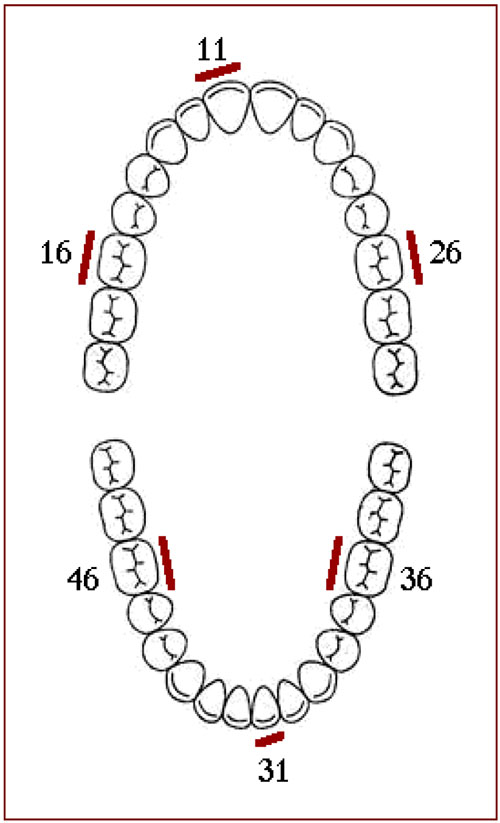
Criteria for classifying debris
0 No debris or stain present
1 Soft debris covering not more than one third of the tooth surface, or presence
of extrinsic stains without other debris regardless of surface area covered
2
Soft debris covering more than one third, but not more than two thirds, of the
exposed tooth surface.
3 Soft debris covering more than two thirds of the exposed tooth surface
Criteria for classifying calculus
0 No calculus present
1 Supragingival calculus covering not more than third of the exposed tooth surface.
2 Supragingival calculus covering more than one third but not more than two thirds of the exposed tooth surface or the presence of individual flecks of subgingival calculus around the cervical portion of the tooth or both.
3 Supragingival calculus covering more than two third of the exposed tooth surface or a continuous heavy band of subgingival calculus around the cervical portion of the tooth or both.
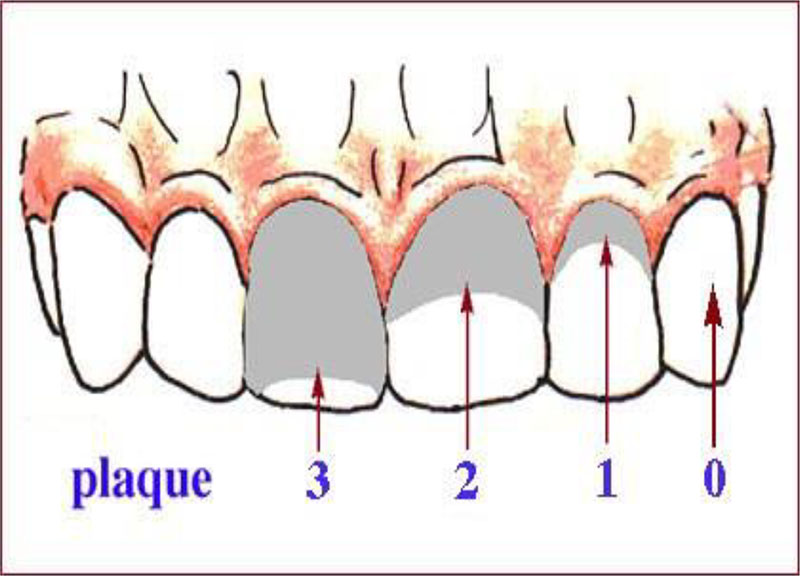
Calculation
Debris Index = (The buccal-scores) + (The lingual-scores) / (Total number of examined buccal and lingual surfaces).
Calculus Index = (The buccal-scores) + (The lingual-scores) / (Total number of examined buccal and lingual surfaces).
Oral Hygiene Index = Debris Index + Calculus Index
The CI-S and DI-S values may range from 0 to 3; the OHI-S values from 0 to 6. These values are just half the score magnitude possible with the OHI (Oral Hygiene Index).
